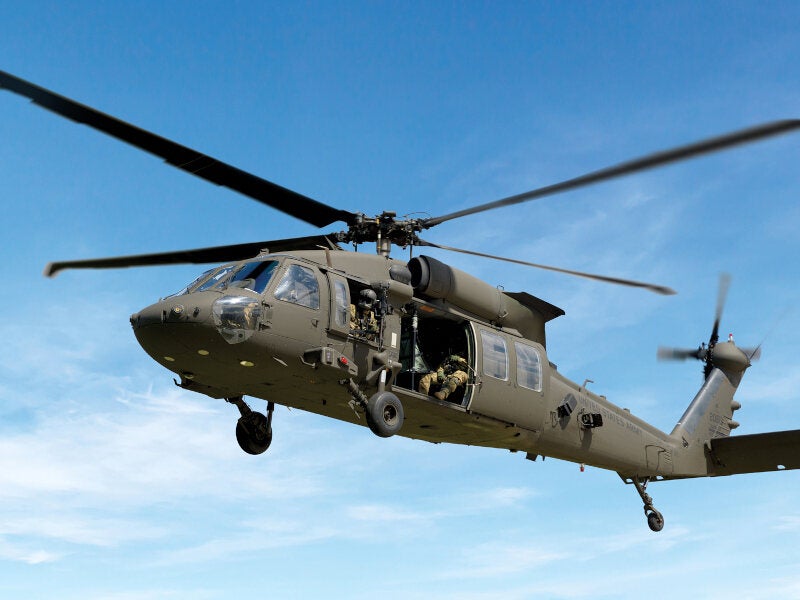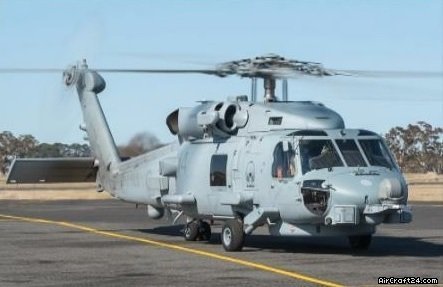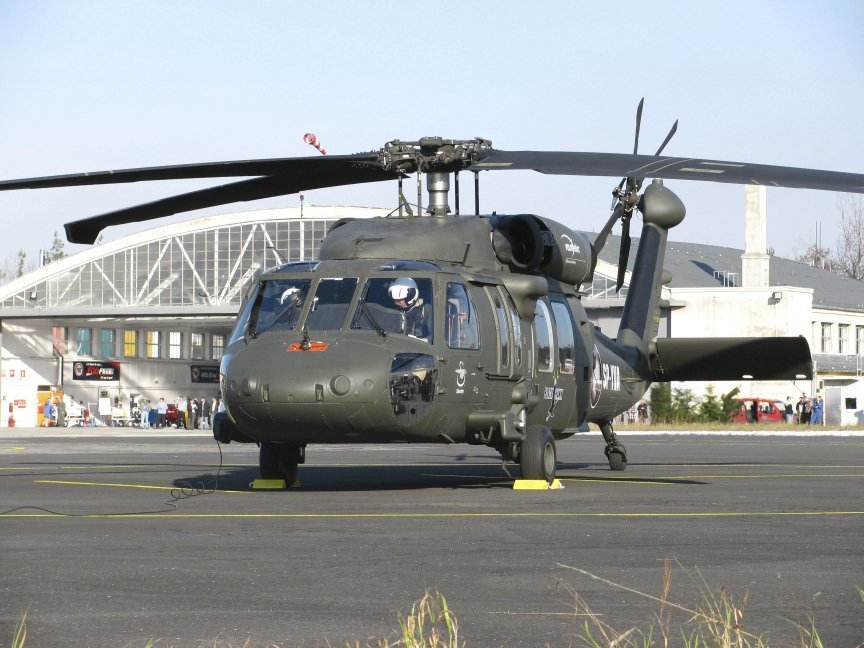Why the Sikorsky S 70 is the Preferred Choice for Modern Helicopter Missions
Why the Sikorsky S 70 is the Preferred Choice for Modern Helicopter Missions
Blog Article
High-Performance Multi-Role Rotorcraft Featuring Advanced Cabin Technologies and Integrated Sensor Systems
The realm of rotorcraft innovation has seen noteworthy developments in recent times, particularly in the world of high-performance multi-role rotorcraft geared up with advanced cockpit technologies and effortlessly integrated sensing unit systems. These technologies have not only increased the functional capabilities of rotorcraft however have also dramatically affected modern aviation procedures on different fronts. From improved mission convenience to enhanced operational performance, the convergence of sophisticated cabin modern technologies and incorporated sensor systems has actually introduced a brand-new era of opportunities for rotorcraft applications. In the adhering to discussion, we will discover the evolution of rotorcraft innovation, look into the realm of advanced cockpit innovations, and check out the implications of incorporated sensor systems on the operational convenience and efficiency of modern-day rotorcraft.
Development of Rotorcraft Technology
The advancement of rotorcraft technology has been marked by considerable improvements in the rules of aerodynamics, materials, and propulsion systems, shaping the abilities and performance of contemporary rotorcraft. Aerodynamic improvements have boosted the effectiveness and ability to move of rotorcraft, enabling enhanced rate, dexterity, and stability throughout flight (sikorsky s 70). Developments in products, such as the use of composite products and progressed alloys, have brought about lighter yet more powerful rotorcraft frameworks, enhancing total efficiency and longevity. Furthermore, developments in propulsion systems, including much more powerful engines and ingenious propulsion modern technologies, have made it possible for rotorcraft to accomplish greater elevations, faster rates, and greater payloads.
These innovations have not only transformed the capabilities of rotorcraft yet have actually additionally broadened their applications throughout different industries, including military, industrial, and emergency situation services. The continuous advancement of rotorcraft technology remains to drive development in the field, pushing the limits of what is feasible and forming the future of vertical trip.
Advanced Cabin Innovations
Building upon the fundamental advancements in the rules of aerodynamics, materials, and propulsion systems, the realm of rotorcraft modern technology currently changes focus towards introducing Advanced Cabin Innovations. The assimilation of cutting-edge innovations within the cockpit setting plays an essential role in improving the functional abilities, safety, and performance of modern-day rotorcraft. sikorsky s 70. Advanced Cabin Innovations include a broad selection of attributes developed to give pilots with improved situational recognition, structured data administration, and instinctive control interfaces
One of the crucial innovations in cockpit design is the execution of glass cockpits, which change conventional analog evaluates with high-resolution displays. These digital systems use customizable formats, real-time information combination, and improved readability, enabling pilots to accessibility critical info at a glimpse. Furthermore, progressed avionics systems, such as fly-by-wire controls and augmented truth displays, are transforming exactly how pilots communicate with the aircraft, enabling specific control and enhanced decision-making capabilities.


Incorporating sophisticated cabin innovations not just boosts pilot performance but also adds to overall goal efficiency and safety and security in intricate functional atmospheres. By leveraging advanced modern technologies within the cockpit, rotorcraft manufacturers are establishing new standards for functional excellence and objective success.
Integrated Sensing Unit Equipments
With the advancement of rotorcraft technology, the combination of sophisticated Integrated Sensor Equipment has come to be paramount in boosting functional performance and security. These Integrated Sensor Systems include a vast variety of modern technologies that give crucial data for numerous functions such as navigating, surveillance, targeting, and ecological tracking. By flawlessly incorporating sensing units like radars, video cameras, lidar, and infrared systems into rotorcraft, operators can benefit from enhanced situational awareness, enhanced objective capabilities, and lowered pilot workload.
One secret advantage of Integrated Sensor Systems is their capacity to gather real-time information and offer workable insights to pilots and mission drivers. Progressed radar systems can spot and track targets over long distances, enabling for early danger detection and effective action planning. In addition, incorporating infrared and electro-optical electronic cameras allows rotorcraft to conduct reconnaissance and monitoring objectives with precision and accuracy.
Basically, the integration of sophisticated sensor innovations right into rotorcraft not only boosts operational efficiency yet additionally adds dramatically to total goal success and crew security. As rotorcraft remain to develop, the duty of Integrated Sensor Systems will most certainly remain at the center of innovation in the aerospace sector.
Functional Convenience and Performance
Enhancing operational flexibility and efficiency in rotorcraft is an all-natural progression from the assimilation of advanced Integrated Sensor Systems. By leveraging the insights and data given by these advanced sensor systems, rotorcraft can maximize their performance across various objectives and environments.
Functional adaptability incorporates the capability of rotorcraft to adapt to various roles and circumstances successfully. With sophisticated cockpit technologies and incorporated sensing unit systems, rotorcraft can perfectly change between jobs such as search and rescue, clinical evacuation, security, and much more. This convenience enhances the rotorcraft's capability to meet varied functional demands without requiring extensive reconfiguration.
Performance in rotorcraft operations is essential for optimizing mission performance and source application. Integrated sensing unit systems play a pivotal duty in enhancing functional effectiveness by providing go to this website real-time data on climate conditions, surface mapping, target tracking, and much more. This information allows pilots to make informed choices promptly, maximize trip paths, conserve fuel, and improve overall goal efficiency.
Effect On Modern Air Travel Workflow

In addition, the combination of advanced sensors promotes boosted objective planning and execution, enabling rotorcraft to execute a large range of tasks with enhanced accuracy. From search and rescue procedures to airborne firefighting and police goals, the abilities of modern-day rotorcraft furnished with advanced cockpit innovations and incorporated sensor systems are unmatched.
In addition, the effect of these developments prolongs beyond operational performance to cost-effectiveness and sustainability. By maximizing flight paths, gas usage, and upkeep next timetables, high-performance rotorcraft equipped with innovative cockpit innovations and sensors contribute to reducing functional prices and environmental influence, making them vital properties in contemporary aviation operations.
Final Thought
Finally, the high-performance multi-role rotorcraft with advanced cockpit technologies and incorporated sensing unit systems represents a substantial development in aeronautics innovation. These innovations boost functional flexibility and performance, ultimately impacting modern-day air travel operations in a favorable method. The assimilation of these innovative modern technologies allows for improved important link capacities and performance in different mission circumstances, showcasing the proceeded advancement of rotorcraft technology in the aviation industry.
The world of rotorcraft innovation has seen significant innovations in current times, particularly in the realm of high-performance multi-role rotorcraft furnished with sophisticated cockpit modern technologies and seamlessly integrated sensor systems. From improved goal convenience to enhanced operational performance, the convergence of innovative cabin modern technologies and incorporated sensor systems has actually ushered in a new age of possibilities for rotorcraft applications. In the complying with discussion, we will certainly check out the development of rotorcraft modern technology, delve right into the realm of advanced cabin developments, and check out the effects of incorporated sensing unit systems on the operational flexibility and effectiveness of modern rotorcraft.

Report this page